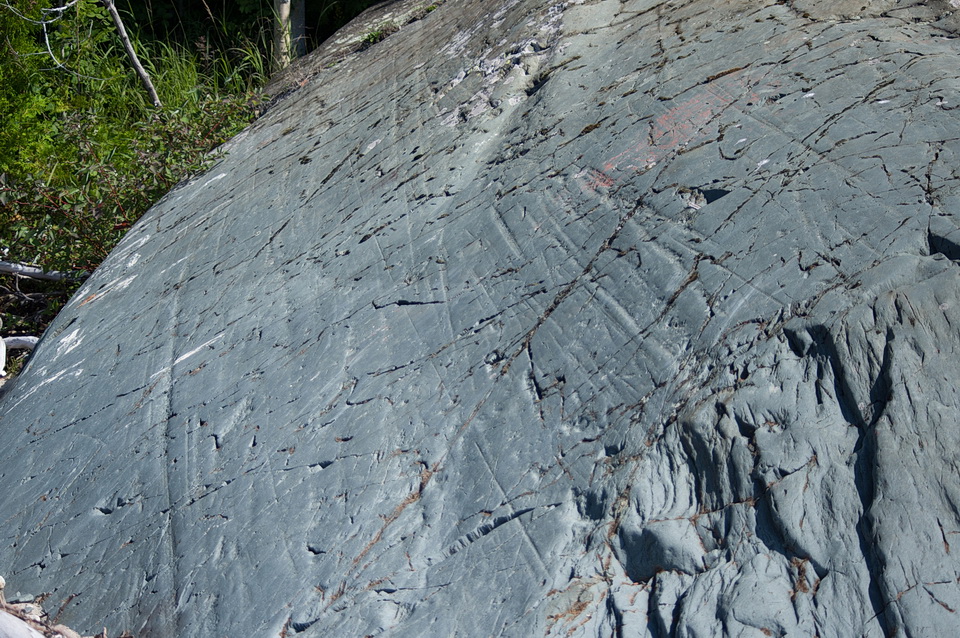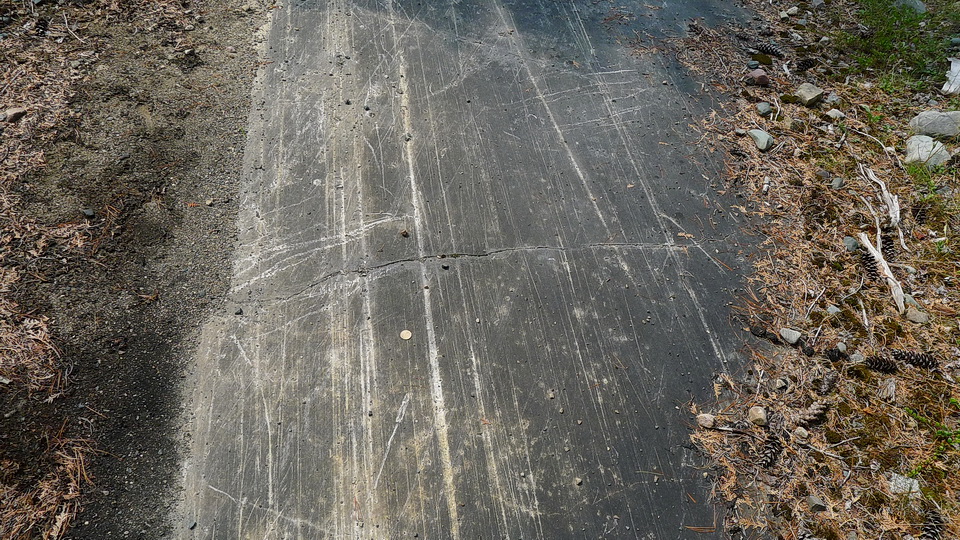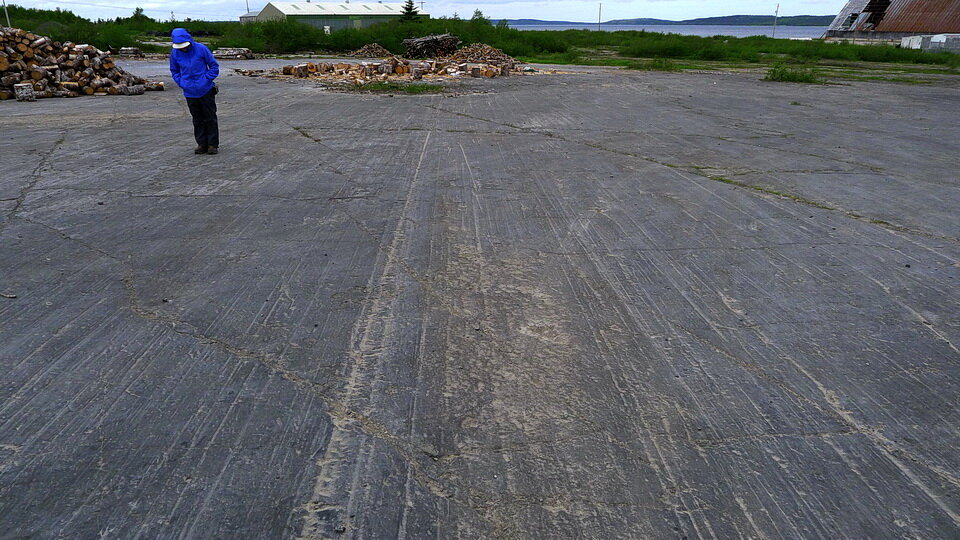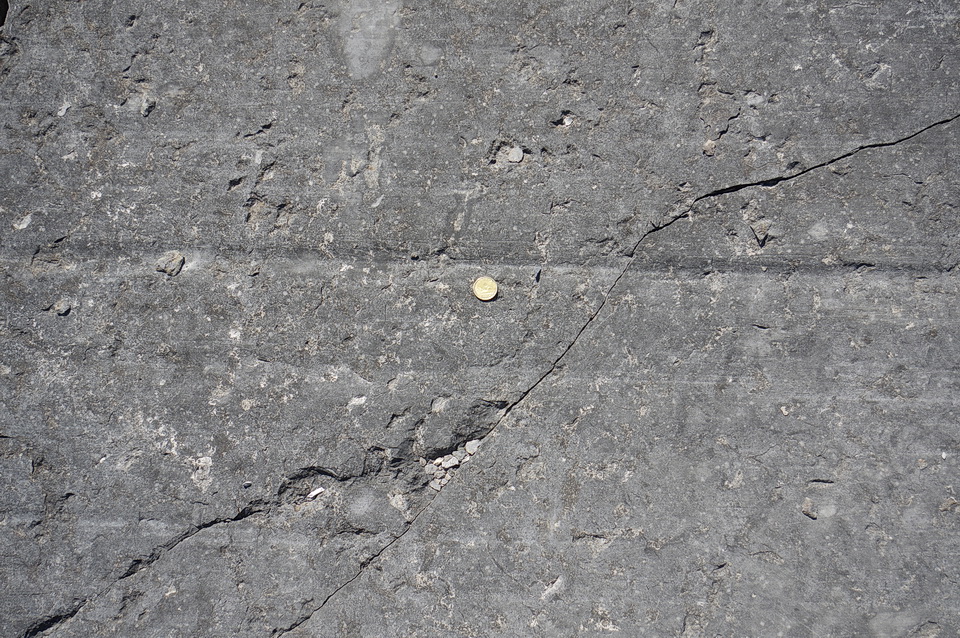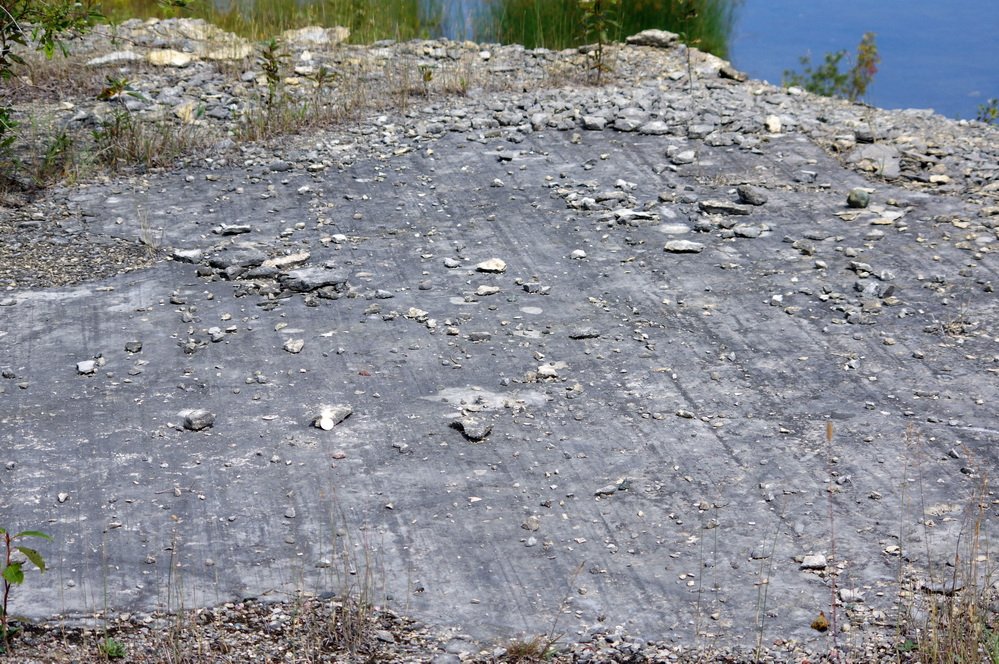Ice Age: The Geological Story of Glacial Striations
What Is A Glacial Striation?
A glacial striation is a long, narrow scratch that appears on the surface of a rock. The scratch or gouge was cut and abraded into the rock by the movement of an ice sheet, more commonly called a glacier. Glacial striations are also named glacial striae.
In Ontario, most, if not all, glacial striations formed during the last great ice age, when glacial ice sheets covered almost all of Canada up to about 15,000 years ago. Often the glacial striations occur as several parallel scratches (Figure 1).
Figure 1: Long parallel scratches on the surface of this rock are called glacial striations. They were created by rock debris that were dragged along at the bottom of a glacier. The rock pieces abraded, or scratched, the surface of the rock outcrop. Photo by Andy Fyon, Michipicoten Harbour, Aug 16/18.
How Were Glacial Striations Made?
Glacial striations were abraded into the basement surface when hard rock debris, or pieces of rock, were dragged along the rock surface at the bottom of the glacier. The rock fragments acted like sandpaper and they abraded the basement rock as the glacier pushed and pulled them along. As the debris was dragged over the rock basement, a scratch, or glacial striae, was created. Sometimes the pieces of rock, which were the abrasion tools, also become striated! The glacial striae are exposed when the glacier melts and exposes the striated bedrock.
What Is The Shape Of Glacial Striations?
Most glacial striations are long, narrow, and straight. They can be several meters in length. They are generally a centimeters or less in width and about the same in depth (Figure 2).
Figure 2: The many parallel scratches are glacial striations. A Canadian dollar coin (“Loonie”) located in the centre of the photo illustrates the size of the striations. Location: Mississagi Lighthouse Campground, western Manitoulin Island, Ontario, Canada. Photo by Andy Fyon, Aug 28/15.
How Do Geologists Use Glacial Grooves?
Glacial striations give geologists information about the direction the ancient glacier moved. The path of the glacier’s movement is parallel to the long direction of the glacial striation. When several parallel striations occur, with different orientations, they tell geologists that one or more glaciers flowed in more than one direction.
Additional photos of glacial grooves
Newfoundland and Labrador area:
Glacial striations cut and abraded into the surface of a limestone pavement, Hawkes Bay, Newfoundland island. Photo by Andy Fyon, June 16, 2011.
Tow sets of glacial striations cut and abraded into the surface of a limestone pavement, Hawkes Bay, Newfoundland island. Photo by Andy Fyon, June 16, 2011.
Sudbury area:
Glacial striations run “east-west”, horizontally across the rock. The key chain is for scale. Location: Bell Park, Sudbury, Ontario, Canada. Photo by Andy Fyon, Aug. 9/14.
Pakenham / Mississippi Mills area, Ontario, Canada
Glacial striations run horizontally across the rock. Dollar coin (Loonie) is for scale. The bedrock is limestone of the Bobcaygeon Formation, Simcoe Group. Location: Pakenham / Mississippi Mills area, Ontario, Canada. Photo by Andy Fyon, Sept 12/17.
Edge of dolostone quarry, North of Earlton, Ontario
Glacial striations run across this dolostone outcrop, exposed on the edge of a limestone quarry There appears to be one set of striations. The quarry is located on the east side of Highway 11, just north of Earlton, off Mini Farm Road. Photo by Andy Fyon, Aug 7, 2021.
Have A Question About This Note?
Andy Fyon: Nov 6/18; July 25/20; Nov 4/21.

